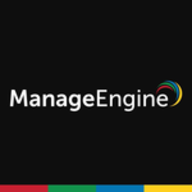

Stackify and ManageEngine Log360 are notable contenders in log management. ManageEngine Log360 is favored for its comprehensive functionality and value, while Stackify is preferred for its integration capabilities.
Features: Stackify provides live app performance metrics, seamless integration with multiple tools, and cloud versatility. ManageEngine Log360 offers comprehensive security event correlation, audit features, and a robust feature set catering to complex needs.
Room for Improvement: Stackify could benefit from an upgraded alerting system and increased customization of reports. Users desire improved responsiveness and scalability in ManageEngine Log360 during high-demand periods. Stackify focuses on specific functionalities, whereas ManageEngine Log360 users focus on scalability and responsiveness.
Ease of Deployment and Customer Service: Stackify is known for straightforward deployment and responsive support, making it easy to implement in cloud environments. ManageEngine Log360 features well-documented setup guides and strong support for on-premise installations. The simpler deployment of Stackify contrasts with the detailed configuration required by ManageEngine Log360.
Pricing and ROI: Stackify offers predictable pricing, although some users question value relative to features. ManageEngine Log360 justifies setup costs with superior functionality and reports strong ROI due to enhanced security insights. Users of Stackify enjoy predictable costs, but the perceived long-term value of ManageEngine Log360 is seen as favorable.
| Product | Market Share (%) |
|---|---|
| ManageEngine Log360 | 1.2% |
| Stackify | 0.2% |
| Other | 98.6% |


| Company Size | Count |
|---|---|
| Small Business | 13 |
| Midsize Enterprise | 2 |
| Large Enterprise | 1 |
| Company Size | Count |
|---|---|
| Small Business | 3 |
| Midsize Enterprise | 2 |
| Large Enterprise | 2 |
Log360 is your one-stop solution for all log management and network security challenges. It is an integrated solution that combines EventLog Analyzer and ADAudit Plus into a single console to help you manage your Active Directory auditing and network security easily.
Stackify is an application performance management (APM) solution that combines application performance monitoring with logs, errors, and reporting. It is a SaaS solution that is developer-focused. Users can quickly scan, identify, and repair issues with applications. Stackify APM offers valuable tools, such as Prefix and Retrace, which help to make it a comprehensive and valuable APM solution. Stackify is now part of the Netreo family of IT Infrastructure Management (ITIM), which is considered one of the fastest-growing IT organizations in the marketplace today.
Stackify Prefix
Stackify Prefix helps developers write better code, faster. The tool examines, tests, and approves code as it is being written. Almost every new application is code-perfect, negating the need for exhausting troubleshooting and frustrating time-consuming code review.
Prefix is able to discover poor-performing SQL queries, ORM queries, potential bottlenecks, and concealed exceptions prior to moving the application into production.
Prefix offers Summary Dashboards, intuitive suggestions, integrated logs, and distributed tracing. Distributed tracing expands visibility to cloud-native applications, microservices, and containers and can also provide additional transparency to cache services, web services, third-party services, and more. Users are able to easily move from logs to traces and back.
This valuable tool ensures developers are able to consistently release the best code possible in the least amount of time, while improving performance, productivity, and profitability.
Prefix is a very robust and easy-to-use tool. It can be used seamlessly with Linux, macOS, and Windows. Prefix integrates well with numerous languages, such as Java, Python, Ruby, PHP, Node.js, .Net, and .Net Core.
Stackify Retrace
Stackify Retrace is a user-friendly, trusted APM solution used in more than fifty countries worldwide. Users know that Retrace is able to ensure they can complete quicker, more efficient application development and consistently enhance overall application performance by suggesting important intuitive suggestions users need.
This solution is beneficial to both developers (Dev) and operations (Ops) personnel to learn to improve code and immediately finetune issues by:
Retrace Real User Monitoring (RUM) uses both front-end and back-end monitoring to give users a complete picture of what is going on with the applications. This intuitive dashboard displays performance with a complete breakdown of resource usage and integrates the server-side and client traces into one engaging, user-friendly, extensive view.
Retrace is an out-of-the-box solution that works seamlessly with Java stacks, PHP, Node.js, Ruby, Python, .Net, and .Net Core. It is also compatible with many of today’s popular frameworks, such as AWS, Azure, Elasticsearch, MongoDB, MySQL, Oracle, PostgreSQL, Redis, and SQL Server. Additionally, Retrace will work effectively with many cloud providers, containers, and languages, and offers excellent and easy integration with today's favorite tools such as Jira, Slack, Jenkins, and more.
We monitor all Log Management reviews to prevent fraudulent reviews and keep review quality high. We do not post reviews by company employees or direct competitors. We validate each review for authenticity via cross-reference with LinkedIn, and personal follow-up with the reviewer when necessary.